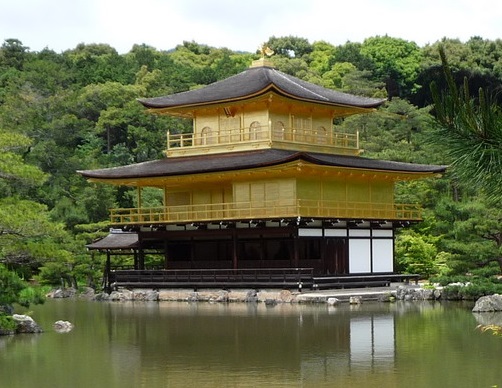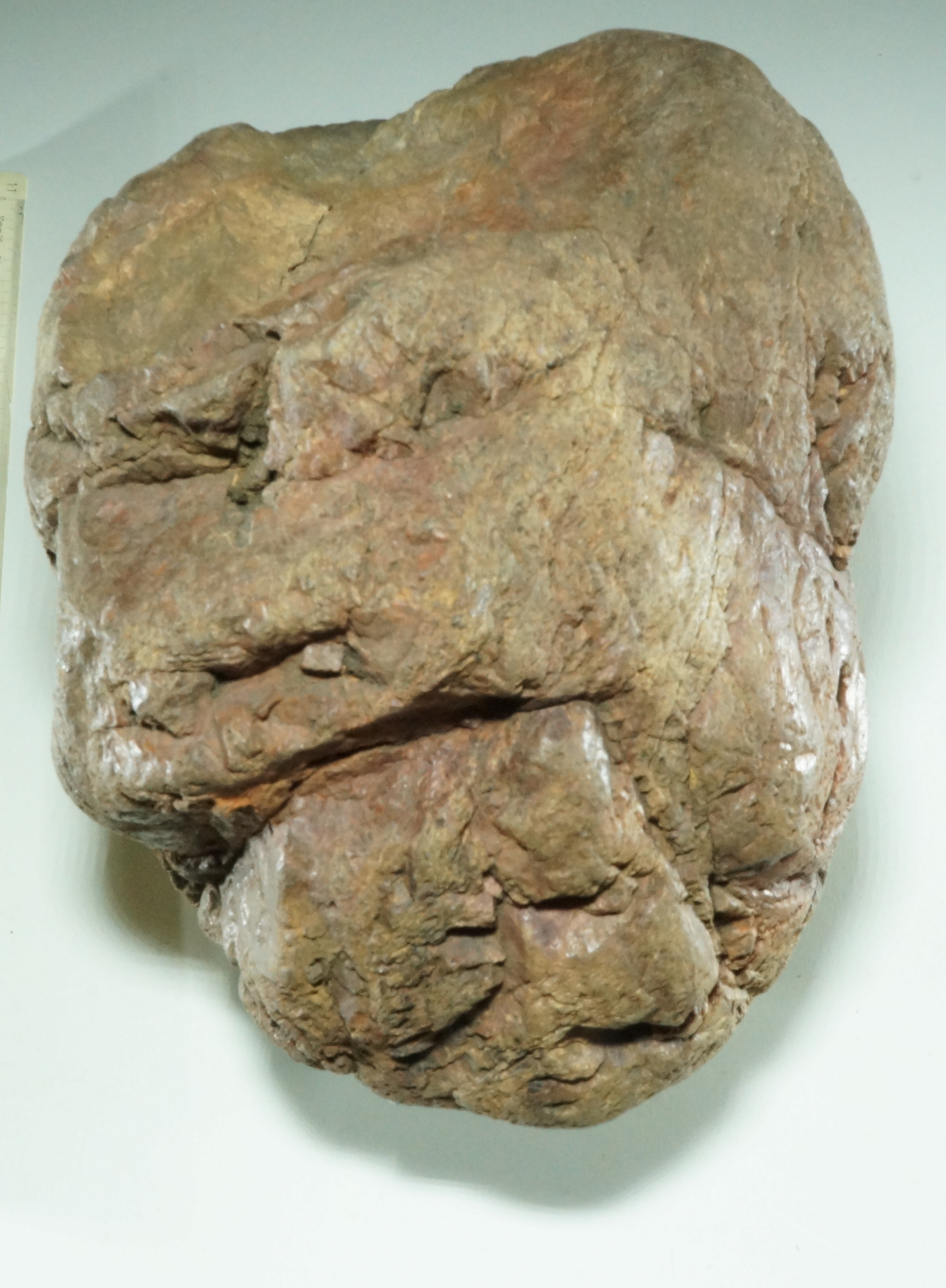Dreams: How it all began
As a boy I dreamed of a large, fully automated model railway. This turned into automating my house, at least allowing remote control when I was away and making life more comfortable in my old age. The dream of building an ocean-going yacht had to be reduced to a catamaran for occasional leisure activities, which soon came to an end when I had to move to Japan. But I quickly came to appreciate the fact that my greatest dream, that of Eastern culture and spirituality, did not lead me to India, as I had originally thought, but to Japan.
And that I would then encounter the Stone Age in the middle of the world's largest metropolis, and that it would take up more and more space in my thoughts and dreams, still seems like a dream to me. In order to explain this, I have to tell a - my - little story. It begins in an unusual place, as the following aerial view of Tokyo shows.
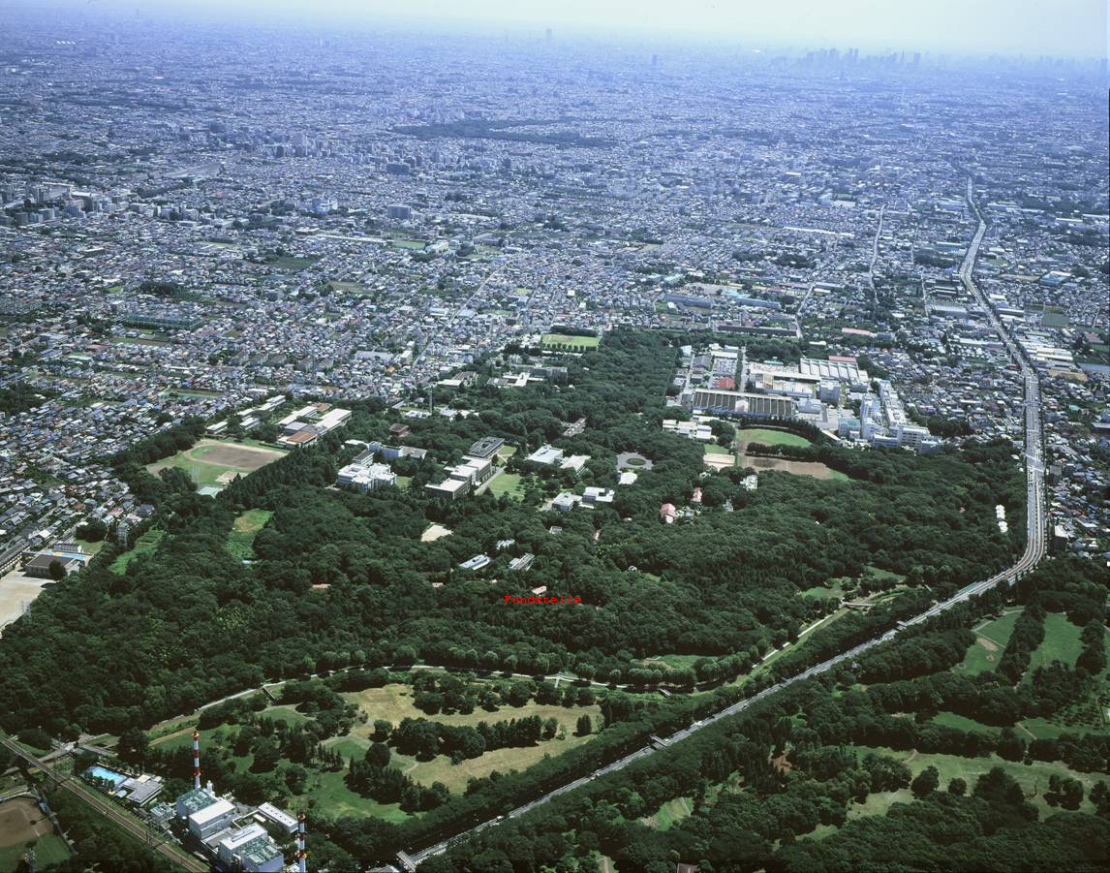
The seemingly endless skyline of this metropolis of 30 million people stretches eastwards to the top of the picture. The silhouettes of the skyscrapers emerge from the haze, and the Pacific Ocean behind them can only be imagined. The foreground, where the picture was taken, looks like a large green oasis in the mass of houses, some densely wooded, some park-like, with only a few buildings. I spent a large part of my life in one of the houses in the most densely wooded area. It is on the campus of a university which, I have to say in retrospect, I came to through particularly fortunate circumstances.
On my very first visit to the vast site, I was shown a place where traces of a Stone Age settlement had just been excavated. I heard from students how popular the archaeology courses were, as it was a unique opportunity to learn not only the theory but also the practice, and to take part in excavations. Because of the large number of finds, all the students were sure to find something of their own. Later I saw the large storehouse where more than 10,000 finds had quickly accumulated.
The unusual richness of the finds, I was told, was partly due to the fact that the entire area had remained forested for centuries and was used by the shoguns for falconry, among other things. Hence the name of the town now incorporated into Tokyo: Mitaka (Three Falcons). In the millennia before that, there was probably little change from the Stone Age.
The second reason can be seen in the picture above. On both sides of the small river (the Nogawa), which you can identify by the bridges in the picture, an unusually large number of traces of Stone Age settlements have been found. The university site lies on a plain about 20 metres above the river. The slope is relatively steep and follows the river like an arch. Many of the settlements are in the areas above the river, still forested as they once were, and "our" house was in the middle of them.
When I became a resident of the campus, I was fascinated by the idea of living in a place where people had lived ten thousand years ago and more, in an environment that had hardly changed since then, at least in the vicinity of the house. On my walks I tried to imagine what life might have been like in the Stone Age. The location was certainly as good then as it is now. Above the slope you were protected from floods, but you were quickly down by the river. For me, the most important advantage of the site, the magnificent view over a wide plain to Mount Fuji, what could it have meant to the people of the Stone Age? I can't imagine that the beauty of the view didn't impress them, mixed with feelings of religious awe, just as one can still feel when looking at Mount Fuji today. In any case, these hunters and gatherers must also have known times of leisure and relaxation, when - I imagined - they gathered plenty of fruit from the trees on the plain above and caught fish from the river below. There were also several clear springs at the foot of the slope, bubbling constantly and feeding small ponds with rare plants, fish and insects. Even today, in modern Tokyo, I have occasionally spotted a kingfisher, a heron or even a pair of eagles with their young in the completely natural jungle along the slope. When I thought of the Stone Age, I almost imagined a small paradise in my mind, which of course lacked other things such as disease, famine and the often harsh climatic conditions of the time, especially the natural disasters that still regularly strike Japan today. And when you think of such banal things as the fact that we could hardly use our terrace all summer because of the mosquitoes, and that one summer our children's lives were even in danger outside the house because of a swarm of hornets that had built a huge nest on our house, you will definitely prefer the comfortable modern living conditions.

At first I was less interested in the Stone Age finds. Their sheer mass made the individual finds seem less significant, and most of them were not that impressive. Most were small potsherds, simple handy stones for scraping, hammering, cutting and the like, more rarely arrowheads or other sharp-edged obsidian flakes. More impressive in the museum were the restored pottery vessels and a few presumably ritual objects such as a 79cm long, albeit broken, phallus.
The finds, as you can see in the picture above, were usually at least a metre deep under a dark layer of humus in a light brown, soft layer of clay that had formed from volcanic ash up to about ten thousand years ago. So I would not come into contact with Stone Age finds around "our" house, even when gardening. To be on the safe side, I also followed the university's advice not to dig any deeper. So nothing really happened for many years until shortly before the end of my time at the university.
The picture on the left shows the view from our terrace to the area behind the house. We soon gave up trying to make a garden there because of the excessive vegetation, the mosquitoes and the unbearable heat in summer. But we managed to keep our Christmas tree alive in the garden for years, using it several times until it became too big. You can see it on the left in the picture. And this is the turning point in my story.
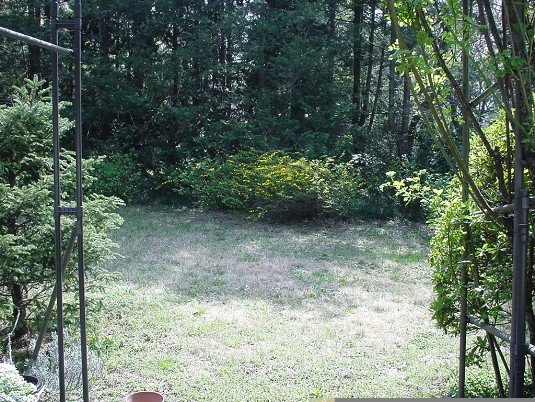
When I went to plant the tree again, to make the hole a little bigger and deeper, I hit a stone with the spade. I stopped digging and, just to be on the safe side, carefully put my hands in the ground to see how big the stone was. To my astonishment, a stone measuring about 30 x 20 cm came to the surface. It was only about 20 cm below the surface (see the spot where it was found on the left).
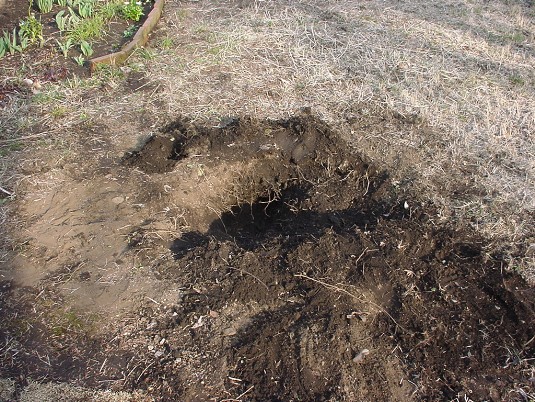
As the material was not unusual, and also because of its size, I dismissed the possibility of a Stone Age connection that had briefly appeared in my imagination and was about to dispose of the stone. Then I noticed its unusual shape. It really did look like a large stone axe, and the straight edge was particularly striking, as it was ideal for attaching a handle, even by simple means.
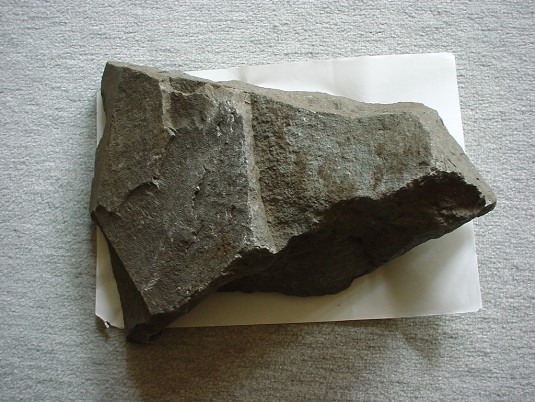
The next photo shows an attempt of mine. Can the shape of this stone be a coincidence? It is still a mystery to me. I hope one day to find the solution.

Anyway, my interest was awakened. In order to avoid hitting a stone while digging (I had damaged one edge of the "axe" in the process), I wanted to test the ground before digging. To do this, I took a 45cm long screwdriver and carefully pushed it into the ground up to the handle. If I came across something hard, I would dig a small hole with my hands only, if possible, and try to feel the hard object. Often I could feel other objects nearby. This is how I made my first finds. Because of the shallow depth of the finds, and because many of them could simply be rubble (as I found in larger quantities elsewhere on the site), or because the stones could have fallen naturally into the ground, for all these reasons I found it difficult to imagine that they were Stone Age finds, although my imagination urged me to do so. In any case, and to be on the safe side, I soon started cataloguing the finds and adding notes.
Slowly a small collection of stones developed, including some interesting specimens. Then something happened that was somehow so wonderful that I still remember every detail. I read in a German newspaper about a German who had found a strange stone figure in a riverbed in Africa. When he had it examined in Germany, it turned out to be the oldest Stone Age cult figure ever found there. If you could find something like that, I began to dream: not just the usual utilitarian objects, but something that would give information about the spiritual world of the people of that time, their beliefs, their dreams, their artistic fantasies. Because there is very early evidence that they did, of course, have such abilities. Suddenly I felt a great urge to search the ground and went outside. Near the Christmas tree I came across something hard. Somehow I felt that this time it had to be something special. Even when I held the small, inconspicuous stone in my hand, I still had that feeling.
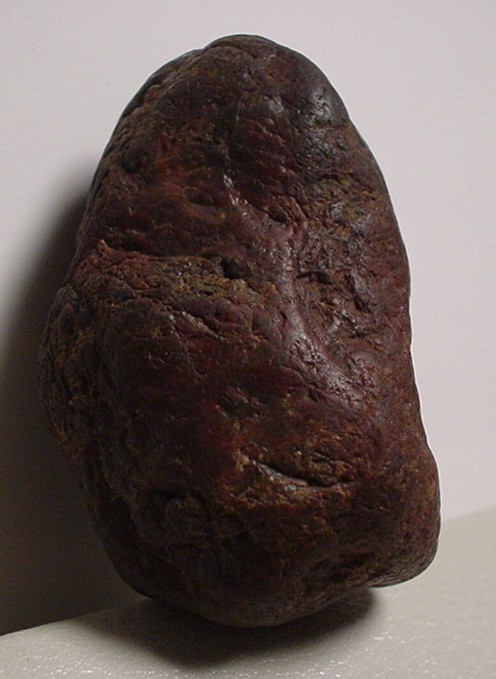
And indeed, no sooner had I washed the clay off the surface than I discovered a large number of faces. My wife laughed when I told her enthusiastically, but then she started counting the faces with me and we came up with over a dozen. And the surface of the stone had clearly been touched by many hands. [more about the stone] All doubts about the authenticity of my findings aside, I was now convinced that I was holding a kind of talisman, a magic stone, like perhaps many thousands of Stone Age people ten thousand and more years ago, who hoped it would bring healing and good luck. Suddenly I felt very close to these people, believing that I felt something of the magical power of this stone, just as they did.
Inspired by other interesting finds, I tried to get more background information on my stones, especially in the reports of the previous excavations on the campus. It was mentioned there that some finds near the slope were closer to the surface, probably because some of the humus layer above had been washed away, especially during heavy rainfall. My sites were all close to the slope, which was also indented at this point, so a lot of water had probably flowed down from the plateau into the river over thousands of years. This explains why the layer of clay behind our house with the Stone Age finds was only about 40 cm deep. This removed a major argument against attributing my finds to the Stone Age.
With the pottery sherds and all the stones with traces of use or processing, the classification was clear to me. However, the majority of my finds seemed interesting because they were specially shaped, but natural, and therefore showed no traces of processing. How could one know that these stones had been used by Stone Age people? This is where a term from Anglo-Saxon archaeology comes into play: manuports, objects that were literally carried by hand from place to place. If you find stones in places where they do not occur naturally and which were inhabited by people, then only they could have brought them there. Since stones are heavy and people had not been settled for a long time, it is certain that only the most important stones were transported. This is especially true of large stones, of course.
I found a particularly impressive example of such a stone a few months before the end of my work at the university. In the picture above, the view from the terrace falls on a yellow flowering bush in the background. I wanted to give it a bit more room to spread out, so I carefully examined the ground beneath the shrub. I found several large stones just below the surface.
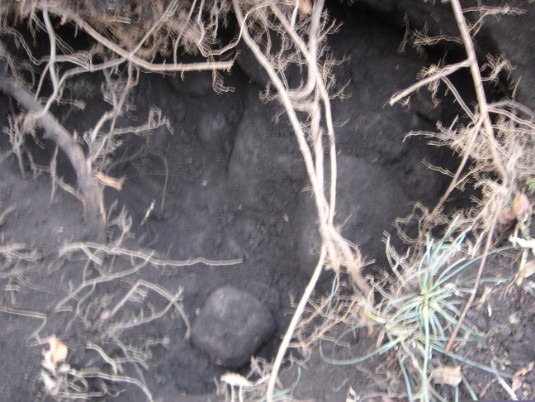
As I continued to dig and feel with my hands, it soon became clear that this was a large, compact pile of stones. In the end there were 107 stones, mostly of medium size, which I dug out until late in the evening, at the very end by torchlight. Most of them were inconspicuous and round in shape. In the middle, however, I immediately noticed one particular stone, around which the others were clustered as if to protect it.

It became the most remarkable stone in my collection, which I try to characterise as a possible 'idol'. Whatever its exact significance to the Stone Age people, the fact that it was so carefully protected and thus survived the millennia suggests that it was very important to them, perhaps even something sacred, as we know from stone cults.
I had originally hoped to discuss my finds with archaeologists in Japan. To do this, I would have had to sift through them, sort them and provide them with the necessary information. But because I have spent the last few years at the university, literally until the last day, implementing a major study reform project, this did not happen. So I was only able to show the finds to my colleague in archaeology, who didn't think they were that important at the time. We agreed that I should take the majority of the finds to Germany, where I would sift and sort them. Hopefully, with the publication here on my website, I have finally achieved this to some extent, leading to a better evaluation and classification of the individual finds. I hope that their importance will be recognised and that they will find their proper place, preferably in the museum of my former university. It would be even nicer if this would lead to the area around the sites being professionally investigated by archaeologists, perhaps revealing something like a Stone Age cult centre. But this is where my Stone Age dreams begin again, which I would like to indulge in a little in an extra section.
* All the information given here about the archaeological finds is based on the facts as far as I know them. The biographical details serve mainly as a framework and as connecting elements and are therefore partly in a simplified or changed form.
